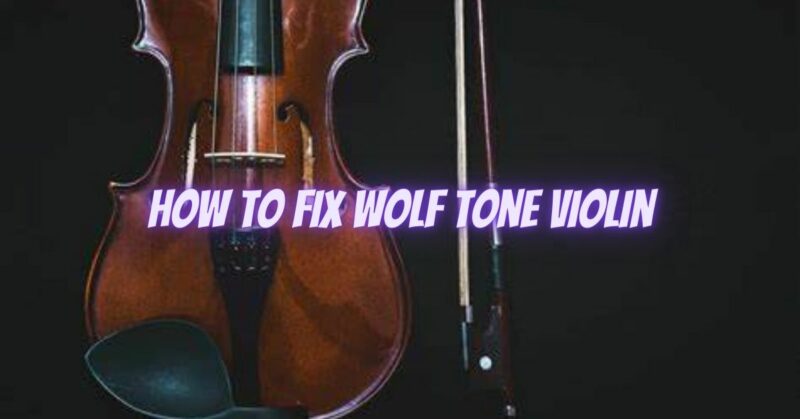A wolf tone is an undesirable and often unpredictable sound anomaly that can occur on certain notes of a violin. It manifests as a sudden, harsh, and sustained resonance that can disrupt the clarity and tonal balance of the instrument. Resolving wolf tones can be a challenging task, but with careful diagnosis and appropriate adjustments, it is possible to mitigate or eliminate this issue. In this article, we will explore some common techniques to address and fix wolf tones on a violin.
- Identify the Wolf Tone: Wolf tones can occur on specific notes or positions on the violin’s fingerboard. Start by identifying the exact location of the wolf tone. Play each note on the problematic string, paying close attention to any sudden, resonant, and unpleasant sounds. Take note of the specific pitches where the wolf tone occurs.
- Adjust the Soundpost: One common cause of wolf tones is an improperly positioned soundpost. The soundpost is a small, cylindrical wooden dowel inside the violin that transmits vibrations between the top and back plates. A skilled luthier can assess and adjust the soundpost’s position to minimize the occurrence of wolf tones. This delicate adjustment requires specialized knowledge and should be done by an experienced professional.
- Try Different Strings: Experiment with different types and brands of strings. The choice of strings can influence the presence and intensity of wolf tones. Some strings are designed to minimize wolf tones or distribute their occurrence more evenly across the instrument’s range. Consult with a knowledgeable luthier or experienced violinist for recommendations on strings that are known for reducing wolf tones.
- Adjust the Tailpiece: Sometimes, wolf tones can be mitigated by making adjustments to the tailpiece. You can experiment with tailpieces made from different materials, such as wood, synthetic materials, or metal alloys, to find the one that reduces the occurrence of wolf tones. Additionally, adding or removing fine tuners on the tailpiece can alter the instrument’s resonance and potentially affect wolf tones.
- Install a Wolf Tone Eliminator: A wolf tone eliminator, also known as a wolf tone suppressor or suppressor tube, is a small accessory that can be attached to the problematic string. It works by altering the string’s vibrations and redistributing the energy to minimize the effect of wolf tones. Consult with a luthier to find a suitable wolf tone eliminator and determine its optimal placement on the string.
- Professional Adjustment: If the above steps do not yield satisfactory results, it may be necessary to seek professional assistance from a luthier who specializes in wolf tone issues. They can assess the instrument’s construction, perform more advanced adjustments, or suggest additional solutions tailored to your specific violin and playing style.
- Evaluate Bow Technique: In some cases, wolf tones can be exacerbated by specific bowing techniques. Experiment with different bow pressure, speed, and contact points to see if adjusting your bowing technique helps alleviate the problem. Consult with a violin teacher or experienced player for guidance on bowing techniques that can minimize the impact of wolf tones.
Conclusion: Resolving wolf tones on a violin requires careful diagnosis and consideration of various factors, including the instrument’s construction, soundpost position, string selection, tailpiece adjustments, wolf tone eliminators, and bowing technique. It’s important to note that completely eliminating wolf tones may not always be possible, as they can be influenced by complex interactions between various components of the violin. Seek professional guidance from a luthier or experienced violinist to determine the most effective solutions for your specific instrument. With patience and persistence, you can significantly reduce the impact of wolf tones and restore the natural, balanced sound of your violin.

